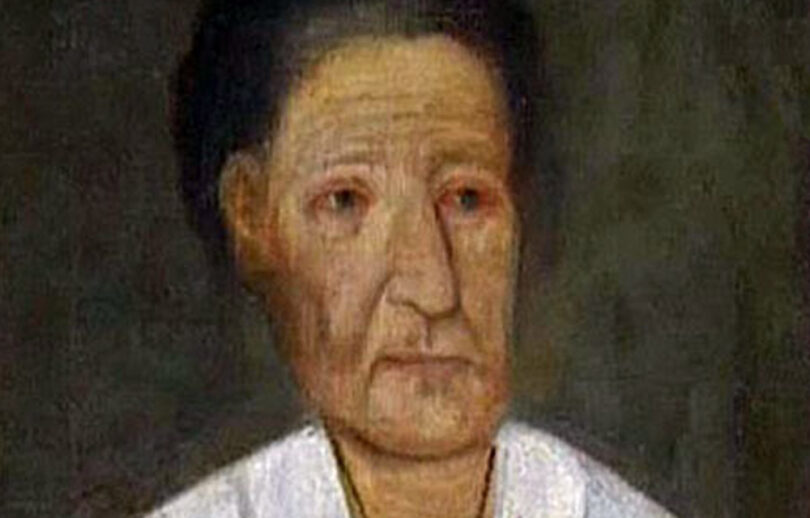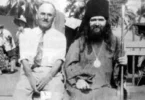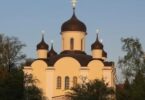The Church commemorates the memory of Holy Blessed Xenia of St. Petersburg on this day.
Holy Blessed Xenia somehow appealed to me along with many other Orthodox believers. She was canonized by the Russian Church in 1988, about the time I went from the USSR to the USA to visit my relatives in Brookline, MA. After that visit, I went to Leningrad to visit Smolensk Cemetery, where she is buried, and wrote a travelogue about this trip, which was published in 1989 in Jordanville’s bi-weekly journal Pravoslavnaia Rusʹ [Orthodox Russia].
Historically, the Church did not really care about the biographical minutiae of a saint’s life as long as he or she had been an Orthodox believer and there was an authentic veneration of him or her. There are very few hard facts about St. Xenia. The Russian historian Sergei L. Firsov provides the following factual account related to St. Xenia:
“A petition from a certain nobleman, court councilor Dumashev, dated 1797, has been preserved, in which he thanks Emperor Paul I for the favors shown to him (the grant of funds to pay debts) and reports on the prediction in this regard made by St Xenia in January, 1766. According to Dumashev, the saint indicated that on his name day (Jan. 11), members of his family would cry and pray. To the question: ‘For what and why?’ she said. ‘The tsar will make you cry with joy, and after that you will have many more tears.’ Everything was supposed to happen when they sang, ‘Christ is Risen.’ Considering that Emperor Paul I was crowned on the first day of Easter, 1797, it becomes clear how the author of the above-mentioned document perceived the prediction of the blessed one. Dumashev wrote to the emperor about St. Xenia in the past tense, which suggests that by 1797 she had already died. The name Xenia Petrova is not found in cemetery books, which were regularly kept starting from the reign of the Emperor, Paul I. However, in 1824, during a flood, Smolensk Cemetery was under water for several hours, and the old cemetery books were destroyed.” (“Ksenia Peterburgskaia,” Pravoslavnaia Entsiklopeida).
The strong veneration of St. Xenia has been clearly manifested in diaspora. The Foundation of the Memory of Blessed Xenia of St. Petersburg, headed by Bishop Laurus, was collecting testimonies of the reception of help from prayers to Holy Blessed Xenia. Many testimonies from various corners of the earth were published in Pravoslavnaia Rus’. Devotees of Blessed Xenia were called upon to serve panikhidas in their parishes and to arrange meetings with slide shows about Blessed Xenia. The question of glorifying Blessed Xenia was brought up at the 1974 All-Diaspora Council and the 1976 Council of Bishops. The criterion for glorification was expressed well in the following statement by Bishop Paul of Stuttgart at the 1976 Council of Bishops: “Blessed Xenia was active more than 200 years ago, but her memory remains alive. Many miracles occur through her prayers.” Archbishop Anthony of Los Angeles wrote in 1979 that the question “of the glorification of Blessed Xenia was resolved easily and quickly at the two past Councils of Bishops.”
In 1978 during the year of the glorification, the Synod of Bishops directed the diocesan bishops and rectors of the churches under the Synod to conduct memorial litiyas for Blessed Xenia in all churches from August 24/September 6 to September 10/23, 1978. This directive stated, “On Sunday, September 11/24, following the Divine Liturgy, inform parishioners from the ambo of the glorification of Blessed Xenia being performed today by the Hierarchical Council and conduct a solemn moleben to Blessed Xenia,” which did take place on the designated day.
And last but not least, I would like to congratulate my daughter Ksenia on her namesday. Many more happy returns of this day!
Source:
Deacon Andrei Psarev, “The Order of Glorifying Saints in the Russian Orthodox Church Outside Russia (1920-2007),” Historical Studies of the Russian Church Abroad.










